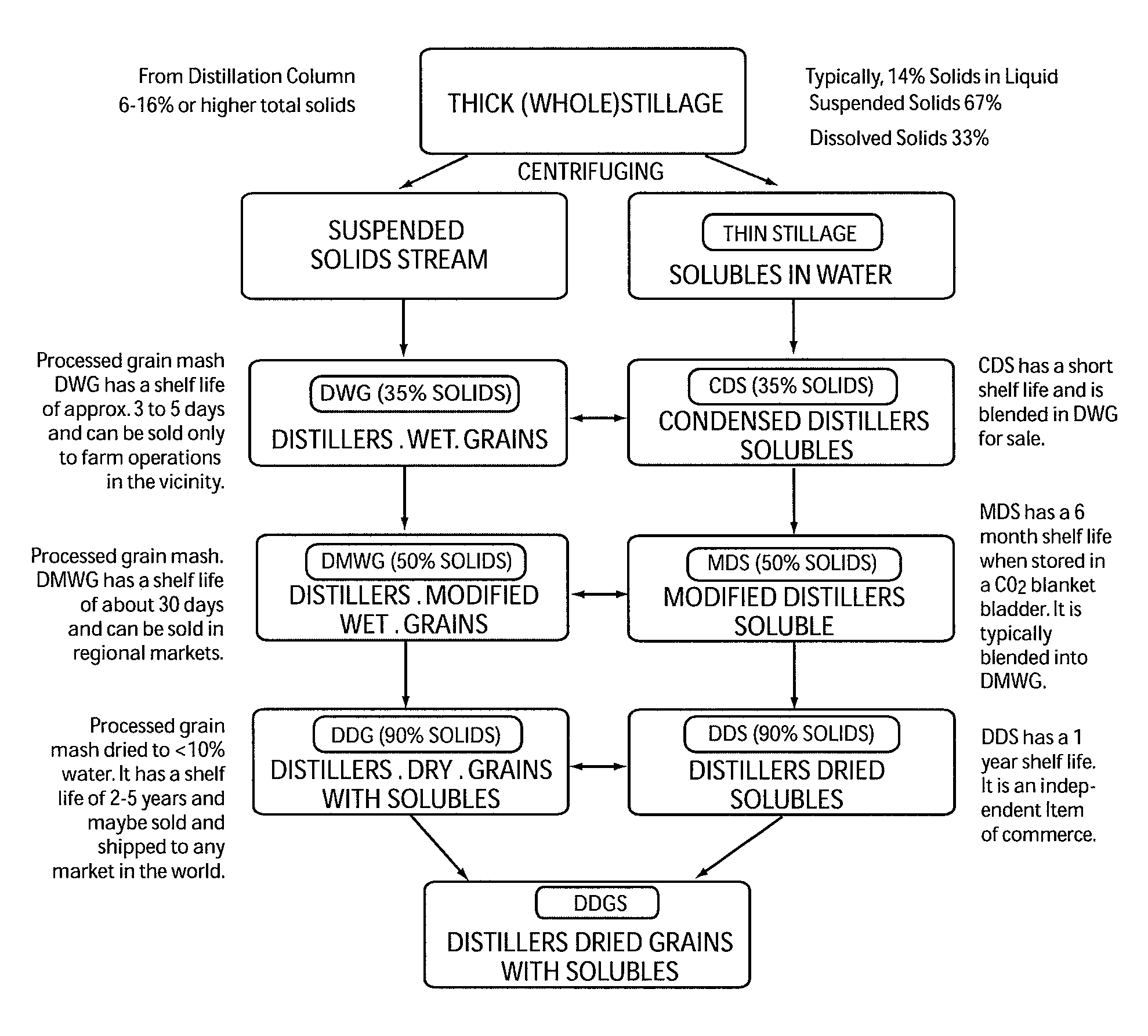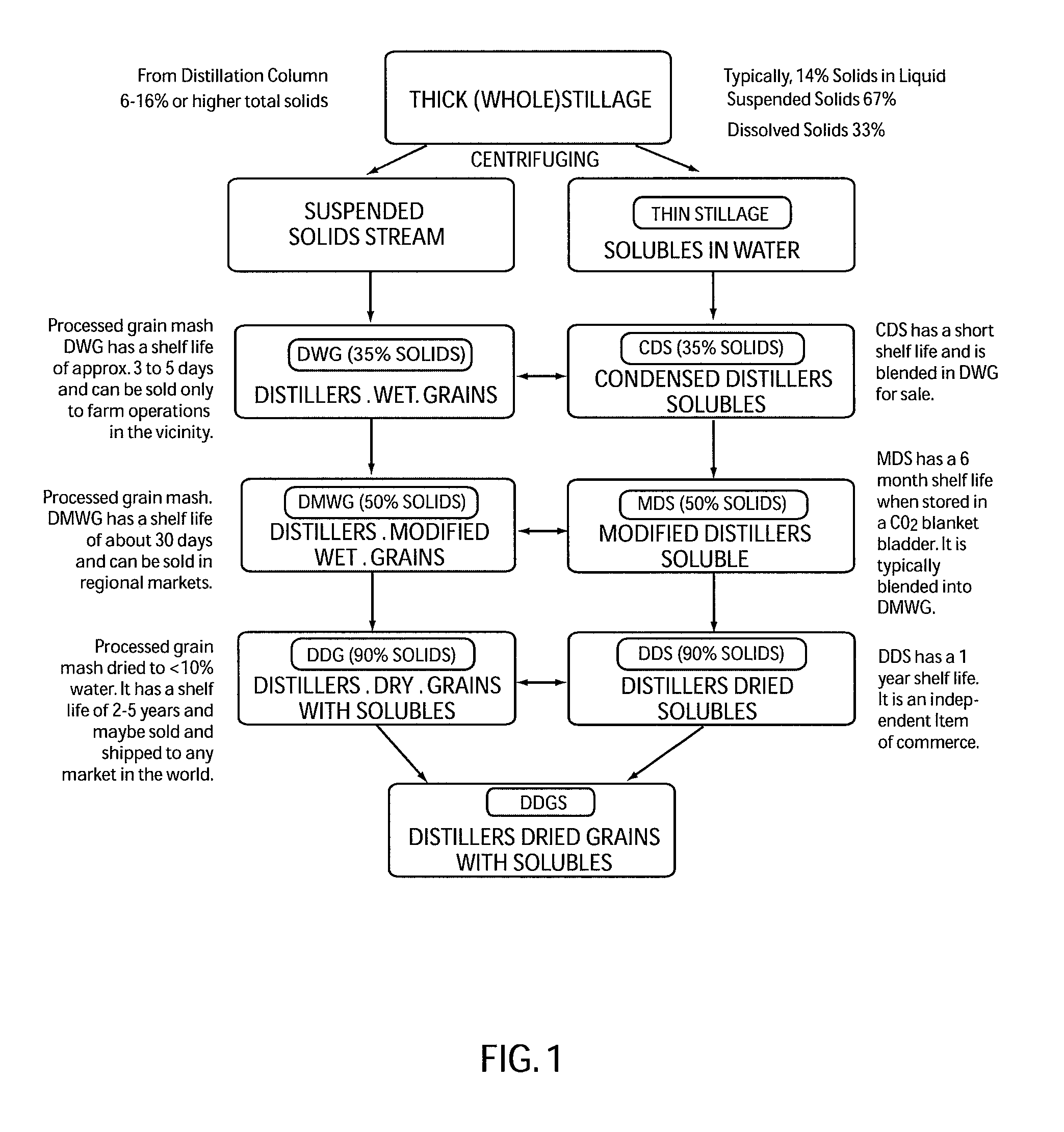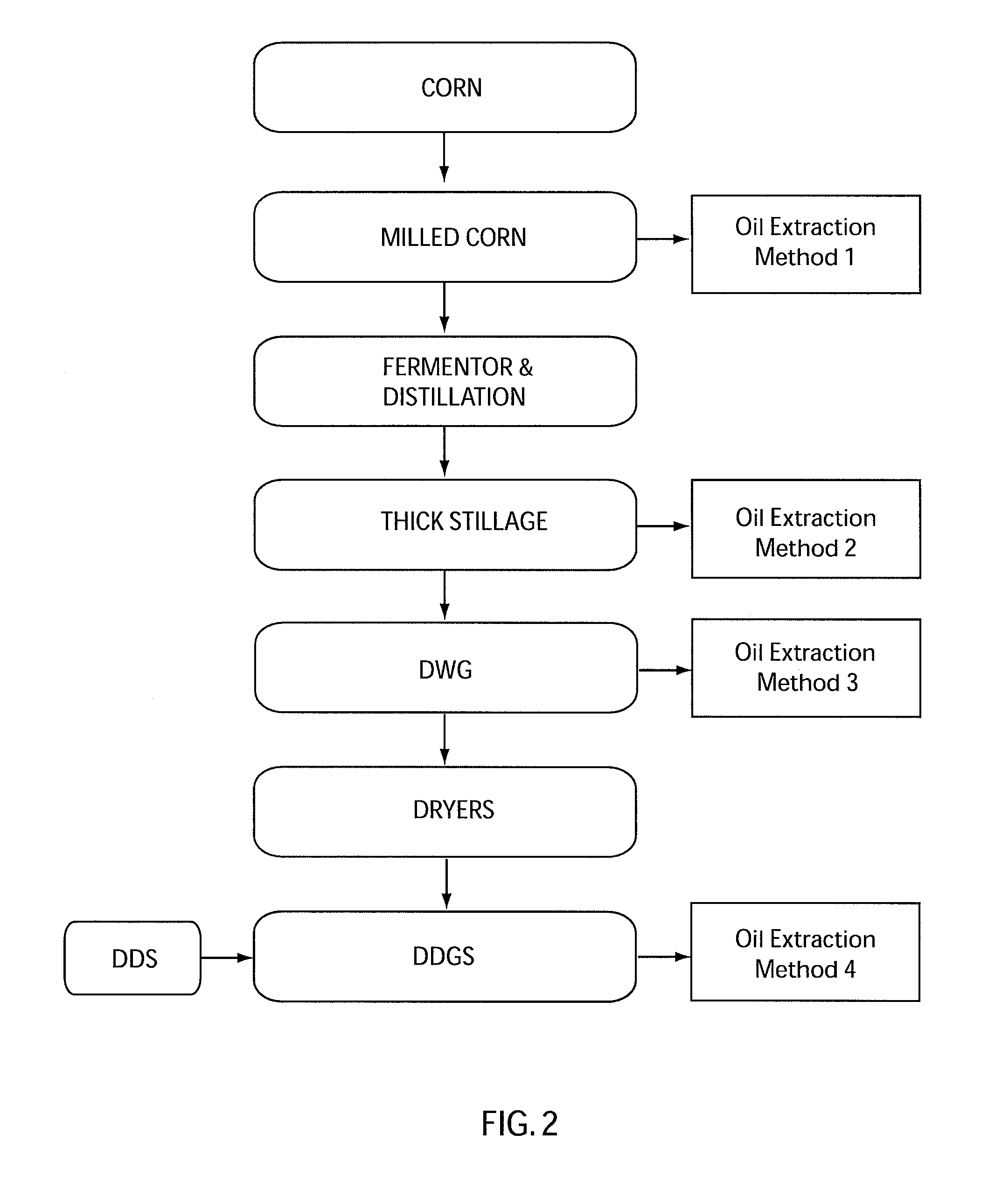Oil recovery from dry corn milling ethanol production processes
a technology of ethanol production process and dry corn, which is applied in the field of oil recovery from dry corn milling ethanol production processes, can solve the problems of limited value and market value of many of the co-products typically produced from the ethanol production process and sold
- Summary
- Abstract
- Description
- Claims
- Application Information
AI Technical Summary
Problems solved by technology
Method used
Image
Examples
example 1
[0050]The following analysis was performed related to oil extraction from TS or DWG.
[0051]TS and DWG samples were acquired from one corn dry mill ethanol plant nearby and were stored at −80° C. prior to usage.
[0052]Extraction of corn oil from TS or DWG was carried out using the assigned solvent and temperature based on the experimental designs. Triplicate extractions were conducted for each experimental condition. For each extraction, 25 mL of solvents were mixed with 2-10 g of TS or DWG. The extraction was conducted using a shaker for 1 hour, with a water bath to control the temperature. For each experiment, after the organic phase was separated, the residue was extracted for the second time using 15 mL of the same solvent for 30 minutes. The organic phases were combined for oil analysis. The solid residue was dried.
[0053]Corn oil content in TS or DWG was analyzed using AOAC (Association of Official Analytical Chemists) Official Method 945.16 (Petroleum Ether Extraction Method). Co...
example 2
Corn Oil Extraction from TS Using Ethyl Acetate
[0059]The following represents one method of extracting oil from TS using ethyl acetate solvent. A total of 9 bench-scale tests were conducted at three different temperatures using ethyl acetate as the solvent. TS was intensely blended with solvent to perform the oil extraction. Experimentation and analysis was performed as set forth in Example 1. The results are shown in Tables 1, 2 and 3.
[0060]TABLE 1 summarizes the results of corn oil extraction from TS using ethyl acetate as solvent at 35° C. At 35° C., the Specific Gravity of ethyl acetate is 0.8848 and the content of ethyl acetate in water phase is 45.15 g / L. The amount of TS used in these tests is normalized to 10 g for comparison purposes.
TABLE 1Results of Corn Oil Extraction from TS usingEthyl Acetate as Solvent at 35° C.WaterProteinProteininininWetOilSolventSolventSolids,Weight,Extracted,Phase,Phase,wt %,ggDM, gg / Lg / LDMTS18.69630.15371.250524.590.1227.5TS29.48570.16111.349825....
example 3
Filtration of Two Phase Stillage
[0067]As indicated, the extraction solution separates into two phases. A total of 8 lab-scale filtration tests were conducted using a plate and frame type filter press, to filter the solids. A 70 wt % rubbing alcohol wash was used to wash the filtrate. TABLE 4 summarizes the filtration results for filtration tests 3-6 as examples. Experimentation and analysis was performed as set forth in Example 1.
TABLE 4Summary of Filtration Test #3 Through #6Filtration Capacity4.0 to 9.2 kg / DS / m2 / hLiquid Capacity194-401 l / m2 / hCake Moisture65.1
[0068]Some general observations were obtained from the filtrations tests. Specifically, moisture levels of 65 wt % were achieved while using 70 wt % rubbing alcohol as a wash, such results will likely be improved using 100 wt % alcohol / ethanol. Secondly, two phase separation occurs in Mother Liquor. Third, the resulting filtrate is clear. It is noted that additional tests on a full scale test unit will likely yield improved re...
PUM
| Property | Measurement | Unit |
|---|---|---|
| exit temperature | aaaaa | aaaaa |
| temperature | aaaaa | aaaaa |
| temperature | aaaaa | aaaaa |
Abstract
Description
Claims
Application Information
 Login to View More
Login to View More - R&D
- Intellectual Property
- Life Sciences
- Materials
- Tech Scout
- Unparalleled Data Quality
- Higher Quality Content
- 60% Fewer Hallucinations
Browse by: Latest US Patents, China's latest patents, Technical Efficacy Thesaurus, Application Domain, Technology Topic, Popular Technical Reports.
© 2025 PatSnap. All rights reserved.Legal|Privacy policy|Modern Slavery Act Transparency Statement|Sitemap|About US| Contact US: help@patsnap.com



